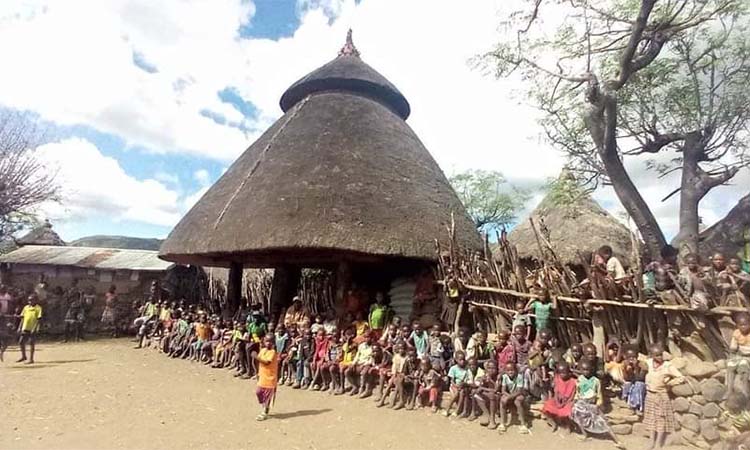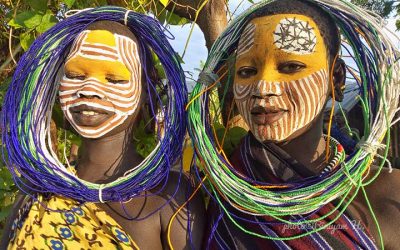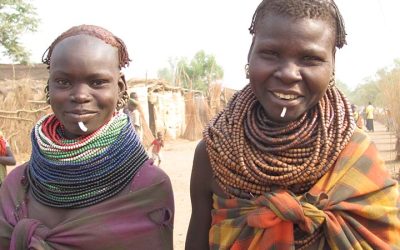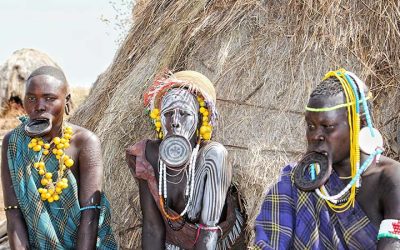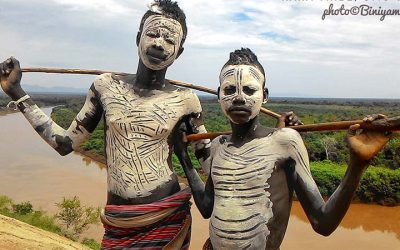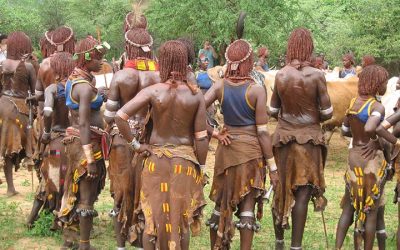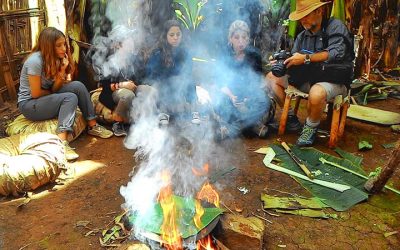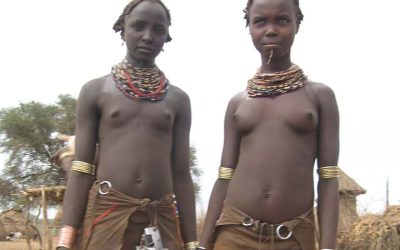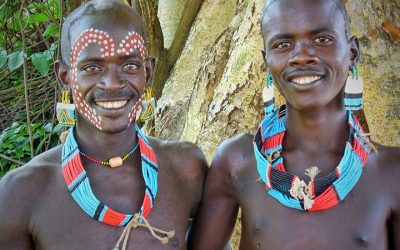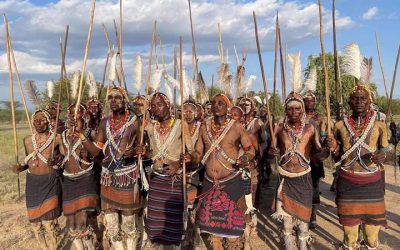Konso Tribe
Villages
Perched on a narrow range of highland mountains ranging from 5,000 to 6,000 feet, live a group of people called Konso. Their homeland, located south of the town of Arba Minch, is surrounded by the lands of the Borana, Burji and Gaudwada peoples. While they have common origins with these tribes and to the Oromo people in general, the Konso’s culture has evolved in a high degree of isolation that is especially apparent in the outward appearance of their villages and fields.
When approaching the Konso homeland, a visitor first notices the red soil, which is littered with rocks, mainly basalt. The rocks form the foundation of both their villages and farmland. Rock walls surround their densely populated villages, often 10-15 feet high and 7-8 feet thick. Inside is a maze of narrow trails, built up with stones, winding through small individual compounds on either side.
Each married man has his own compound comprised of at least three huts. The area is divided into an upper level where the family lives and the lower level where the livestock are kept. The stone walls of the huts are topped by thatched beehive-shaped roofs. Entry into the sleeping huts is through a low arched doorway, about 3 feet high, which gives way to a short wooden tunnel. The point of this restricted entry is for defense: an enemy crawling through would not be able to use his weapon and the occupants could easily club or spear him. The compound is secured by a high fence of wooden palings which are sometimes reinforced by planting small trees. The trees, rocks and wood pilings create an impression of walking through a buttressed shady grove.
The narrow lanes converge on open places called moras, which are encircled by trees growing on low stone platforms. A large village will have several moras. These seem to be the center of village life, at least for the men: dances, assemblies, religious ceremonies and courts of law are held there. Women are excluded from the most important rites although they may attend others as spectators and may take part in dances.
Adjoining the open areas are striking buildings (also called moras) with open-sided walls and steep, thatched roofs supported by juniper trunks. Groups of men and older boys are required to sleep there so they will be ready for fires (a major threat) or enemy attacks (very unlikely today). There is a third reason men sleep there: They believe women weaken them, draining their vitality by sexual intercourse, so they sometimes spend the night in the special houses to preserve their virility.
One is impressed by the cleanliness walking through a Konso village. Latrines are on the outskirts of the towns and animal dung is removed to fertilize the fields. Work parties repair the narrow walkways and remove trash and weeds from the common areas in the village. (This is at least true in villages open to tourists. In others, the care of public places may not always be enforced.)

